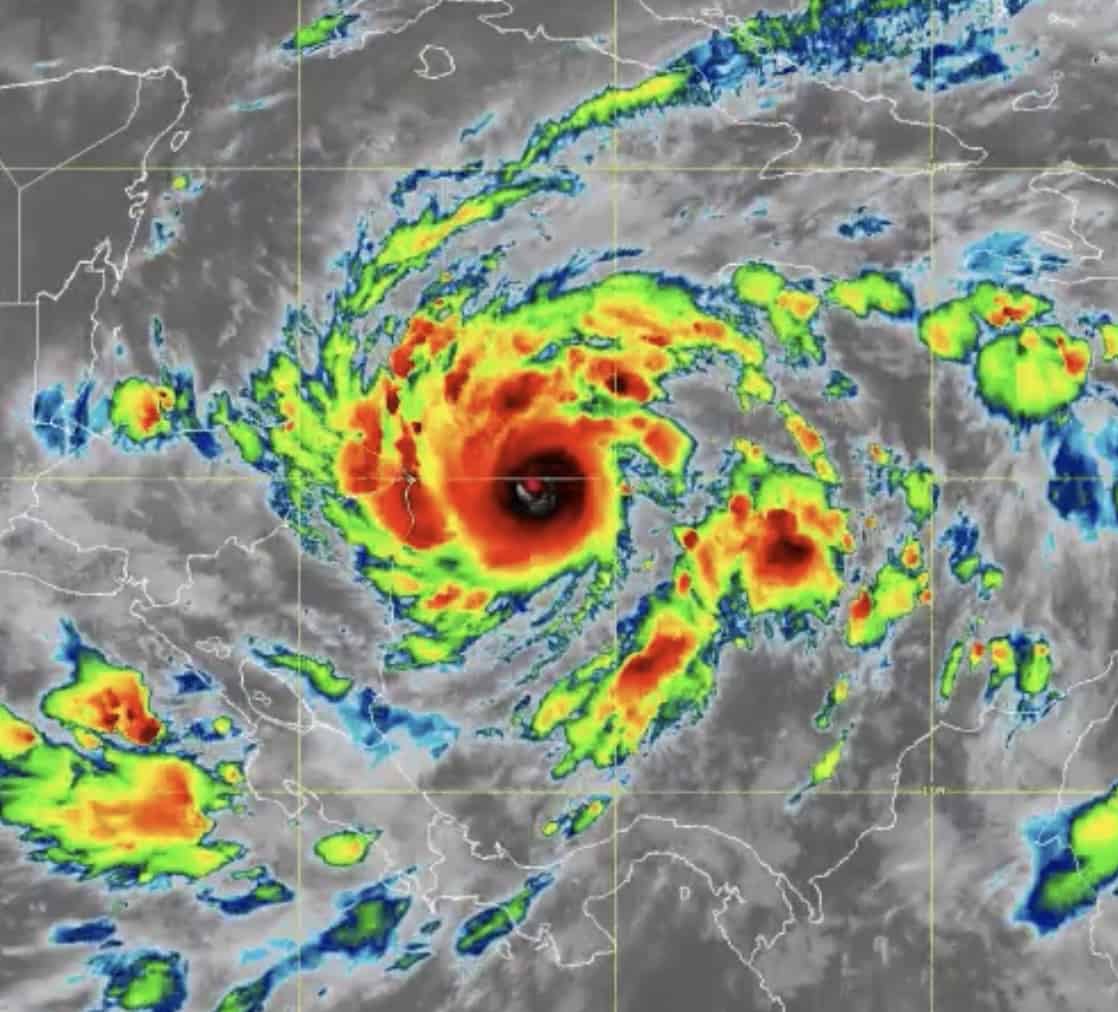Central America is preparing Monday for the impact of Hurricane Eta, which is advancing as a Category 3 storm toward the Caribbean coast of Nicaragua and Honduras, according to the National Hurricane Center (NHC) of the United States.
Eta became a Category 3 hurricane on the Saffir-Simpson scale of 5 and continued to strengthen with maximum sustained winds of 193 km/h.
“Eta has rapidly intensified to a major hurricane with maximum sustained winds of 120 mph. Continued strengthening is expected before it makes landfall along the northeastern coast of Nicaragua on Tuesday,” the NHC said.
Its center was located about 225 km northeast of Bilwi (also known as Puerto Cabezas), in the North Caribbean of Nicaragua, according to the NHC.
Eta, which is traveling at 15 km/h, is expected to make landfall early Tuesday about 17 km south of Bilwi, a city in Nicaragua’s north Caribbean.
In the impact zone located between Bilwi and Cabo Gracias a Dios, on the border with Honduras, more than 80,000 people live, according to calculations by the government of that Nicaraguan region.
Both Nicaragua and Honduras, the countries with the highest risk, declared a red alert before the arrival of the cyclone.
The Nicaraguan government declared a red alert (maximum) in the North Caribbean and a yellow alert in the northern departments of Jinotega, Nueva Segovia, Chinandega, while a green alert is maintained for the rest of the country.
Winds, floods and landslides expected
The NHC warned that “catastrophic winds, flash floods and landslides are expected in parts of Central America.”
Eta already caused heavy rains on Sunday in Costa Rica, where the National Emergency Commission (CNE) preemptively displaced some residents in the South Pacific.
The Permanent Contingency Commission (Copeco) of Honduras issued a red alert for the Caribbean departments of Gracias a Dios, Atlántida, Colón and Islas de la Bahía, as well as Olancho due to the possibility of heavy rains caused by the cyclone.
In Guatemala, rains are expected that could cause “landslides, landslides, river flooding and flooding due to the saturation of water in the soils,” according to David León, spokesman for the National Coordinator for the Disaster Reduction (Conred).
In Nicaragua, the director of the National System for the Prevention, Mitigation and Attention of Disasters (Sinapred), Guillermo González, warned that “there may be material damage because the houses are very fragile.”
Fear in Nicaragua
“The eye of the hurricane comes directly on Bilwi and we have it close by. There is some concern of the population, there are many floodplain areas, people are packing their goods and looking for ways to get out to shelters,” Limbort Bucardo, a resident of that city, told AFP.
Its residents turned to banks and businesses to stock up on food, lamps, radios, and plastic to protect their belongings, Bucardo added.
Meanwhile, Kevin González, a member of a volunteer brigade, expressed fear because “the houses are totally vulnerable, they are old wooden houses lined with plastic” that will not withstand strong winds.
Sunday, the Nicaraguan government sent a shipment of 88 tons of food to the North Caribbean, as well as crews to attend to anticipated power, communications, infrastructure and health emergencies.
Two air force planes transported military personnel and medical equipment to preemptively attend to the emergency.
González indicated that 1,600 indigenous people living in the Miskitos Cays, off the coast of the Nicaraguan Caribbean, were evacuated on Sunday.
Indigenous people from coastal communities and those located east of the Coco River, bordering Honduras, which could be affected by the cyclone, were also aided.
The naval forces prohibited the sailing of boats and the local authorities urged the population of Bilwi to reinforce the security of doors and windows of their houses.








